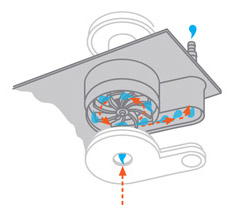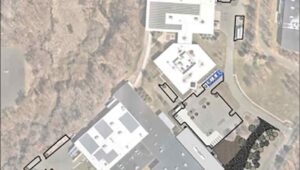Condensate pumps – defying gravity
27th November 2013 Condensate is a natural by-product of the cooling process. In some cases it can simply be drained by gravity but where this is not possible or practical it is necessary to use a condensate pump.
Condensate is a natural by-product of the cooling process. In some cases it can simply be drained by gravity but where this is not possible or practical it is necessary to use a condensate pump.
“Traditionally, removing condensate water from an air conditioning unit was a challenge,” comments Alex Newman, head of Aspen’s technical and innovation team.
“With more people around the world wanting the comfort of air conditioning, the need for fast, reliable installation techniques is becoming more important than ever before.”
When fitting an air conditioning system, no matter whether in a commercial, domestic or industrial setting, the evacuation of condensate water generated by the air conditioning unit has to be considered. Traditionally, a pvc pipe leading away from the system, drawing the water through the use of gravity has been the only option. Since then, the condensate removal pump has been introduced to the market. These pumps have proved to be a massive success as the need for a gravity drain in an enclosed space is no longer a problem, as the condensate removal pump pumps the water up and away from the unit.
“Gravity drain systems can only work if there is sufficient space when installing an air conditioning unit. Draining the excess water into a bucket or straight out the window onto the exterior wall was common installation practice – as there wasn’t a better way available,” says Alex Newman.
“Since then, the development of pumps in this market has allowed installers to fit a pump either in, on or above the air conditioning unit allowing the water to be pumped up and away from the unit without the need for gravity.
“The pumps will remove the condensate water whether in a flat on the 30th floor of a building, or in the basement of an office block. Condensate pumps allow installers to save time and money on site, provide an aesthetically pleasing option for the customer and mean water damage caused by gravity drainage is a problem of the past.
“Ultimate flexibility is guaranteed, as air conditioning units can now be placed as desired by the home/builder owner, instead of placing the unit close to an outside wall which is a requirement for gravity drainage.”
There are four different types of condensate removal pumps:
 Piston pumps
Piston pumps
Piston technology uses a small oscillating piston that oscillates at 60 cycles per second. It uses positive displacement and can operate between two one-way values. Piston pumps are quiet, small and have flexible installation options.
“If designed correctly, piston pumps are very quiet, so they suit indoor use near meeting rooms or in offices,” explains Alex Newman.
Peristaltic pumps
The peristaltic pump is a type of positive displacement pump with a precision engineered rotor squeezing a flexible tube, driven by a powerful gear motor.
Extremely reliable and being able to pump potentially unclean water, they pump long distances and can be installed a great distance away from the unit. This makes them ideal for hotels or buildings where the units are located remotely or in inaccessible rooms.
 Centrifugal pumps
Centrifugal pumps
Centrifugal technology is a rotodynamic pump that uses a shade pole motor connected to rotating blade that’s spinning within an enclosed housing to create flow.
These pumps may be noisy but are cost-effective and ideal for applications that require higher water volumes.
Diaphragm pumps
Another type of positive displacement pump. These pumps have been developed for specialist applications.









